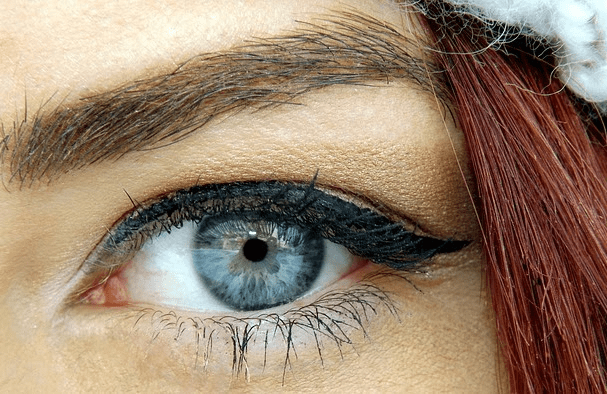Home » Blog » Diabetic Eye Disease PART 1 – Diabetic Retinopathy Development & Stages
Diabetic Eye Disease PART 1 – Diabetic Retinopathy Development & Stages
Posted by: Mitchell Refractive Surgery & Eye Center

Diabetes can affect the human body in many ways. The condition occurs when the body does not use and store sugar properly. This can cause high blood-sugar levels, excessive thirst, and excessive urination. It may also result in changes to the body’s veins, arteries, and blood vessels.
In terms of your vision, diabetes can lead to the development of cataracts, glaucoma, and damaged blood vessels inside the eye and, overall, put you at risk for diabetic eye disease.
Diabetic Retinopathy
Diabetic eye disease (or diabetic retinopathy) is a complication of diabetes that can result in loss of vision. This condition is caused by negative changes in the blood vessels of the eye. When retinal blood vessels are damaged, they may leak fluid or blood and grow fragile, brush-like branches and scar tissue. This blurs and distorts the images that are picked up by the retina. The retina is a nerve layer at the back of the eye that senses light and helps to send images to your brain. If the images coming into the retina are damaged, your sight is impaired.
Developing Diabetic Retinopathy
The longer a person has diabetes, the more at risk they are of developing diabetic retinopathy. This diabetic eye disease is the leading cause of new blindness among adults in the United States. People with untreated diabetes are said to be 25 times more at risk for blindness than the general population. Additionally, about 80% of people who’ve had diabetes for at least 15 years have some blood vessel damage to their retina. However, thanks to the advancements of today, with early diagnosis and proper treatment, only a small percentage of people who develop diabetic retinopathy have serious vision problems.
Note—pregnancy and high blood pressure may aggravate diabetic retinopathy.
Types of Diabetic Retinopathy
Background Retinopathy
This is an early stage of diabetic retinopathy. In this stage, tiny blood vessels in the retina become damaged and leak blood or fluid. That fluid causes the retina to form deposits called exudates. While this stage of diabetic retinopathy usually doesn’t affect your vision, it can lead to more harmful stages of diabetic eye disease. For this reason, background retinopathy is considered a “warning sign.”
Macular Edema develops if the leaking fluid collects in the macula, the part of the retina that lets us see fine details, like letters or numbers. Reading and doing close up work may become more difficult if you develop macular edema.
Proliferative Retinopathy
Proliferative retinopathy is the most serious form of diabetic eye disease. It affects up to 20% of diabetics and can cause severe loss of sight, including blindness.
The condition occurs when new, abnormal blood vessels begin growing on the surface of the retina. This abnormal growth is called neovascularization. The main issue here is that the newly formed blood vessels have weaker walls and may break and bleed. Leaking blood can cloud the vitreous (the clear, jelly-like substance that fills the center of the eye) and partially block the light passing through the pupil toward the retina, causing blurred and distorted images.
Abnormal blood vessels may also grow around the pupil (on the iris) causing glaucoma by increasing pressure within the eye. Furthermore, the abnormal blood vessels may produce scar tissue that pulls the retina out of place—a phenomenon called retinal detachment. If left untreated, a retinal detachment can cause severe vision loss.
Symptoms
When it comes to background retinopathy, gradual blurring of vision may occur if macular edema is present. However, as this level of diabetic eye disease is more of a warning sign, there are usually no giant symptoms that will cause you alarm. As such, you may not realize you have the condition unless an eye doctor checks you.
If your diabetic eye disease progresses into proliferative retinopathy, you may not feel pain, but due to the bleeding associated with the condition, your sight may become hazy, spotty or even disappear altogether. This is a severe form of diabetic eye disease and requires immediate medical attention.
Call Your Eye Doctor Today
If you have diabetes you are at risk for many harmful conditions, including diabetic eye disease. The key to treating diabetic eye disease and keeping it from progressing into more harmful stages of retinopathy is getting the proper treatment and being diagnosed by an eye doctor. So, in order to maintain your vision, be sure to schedule an appointment with our experienced eye doctor, Dr. Alan Mitchell of the Mitchell Eye Center. We are committed to helping our patients have great vision throughout their lives!
